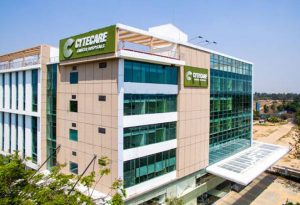Gallbladder Cancer
Both surgical and nonsurgical treatments are available for Gallbladder Cancer. After complete analysis, doctor recommends the right treatment depending on stage and severity of the disease. … Read More
Top Doctors For Gallbladder Cancer Treatments
Top Hospitals For Gallbladder Cancer Treatments
Gallbladder Cancer
- Stage 0 (known also as carcinoma in situ): This stage is limited to the mucosal (the innermost) layer of a gallbladder.
- Stage I: In this stage, cancer has spread to the connective tissue or the muscularis layer.
- Stage II: In this stage, the cancer has moved beyond the visceral peritoneum (the tissue that covers the gallbladder) to the liver, and/or another nearby organs, like the stomach, small intestine, pancreas, bile ducts, connective tissue or adjacent lymph nodes.
- Stage III: In this stage, the cancer has spread to the liver or the organs near it, and perchance to the lymph nodes.
- Stage IV: In this stage, the cancer has reached the adjacent lymph nodes, and/or organs located far from the gallbladder.
- Blood tests (Liver function tests to be precise): This shows how well the liver, gallbladder, and bile ducts are functioning. It also gives clues about what could be causing the symptoms.
- Ultrasound testing: Images of the gallbladder and the liver are generated from sound waves for physical assessment.
- CT scan.
- MRI scan.
- Percutaneous Trans-hepatic cholangiography (PTC), an X-ray imaging.
- Endoscopic retrograde cholangiopancreatography (ERCP).
- Biopsy.
- Surgery to remove the gallbladder: this is known as cholecystectomy. When gallbladder cancer is still in early stages and it’s confined to the gallbladder, it can be treated with an operation to remove the gallbladder.
- Surgery to remove the gallbladder and a portion of the liver: When gallbladder cancer has extended beyond the gallbladder and also into the liver, the best treatment option will be surgery to remove the gallbladder, along with portions of the liver and bile ducts that surround the gallbladder.
Symptoms
• Pain
• Nausea or vomiting
• Fever or chills
• Chronic diarrhea
• Jaundice.
• Unusual stools or urine.
Causes
The exact cause of gallbladder cancer is yet unknown. However, like other cancers, what we do know is an error (known as a mutation) in a person’s DNA leads to an uncontrolled rapid growth of cells.
As the number of cells proliferates (that is, multiplies), a mass or tumour forms. If left untreated, these cells in the long run spread into nearby tissues, and to distant parts of the body.
It is found that gallbladder cancer forms when healthy gallbladder cells develop changes (mutations) in their DNA. These mutations cause cells to grow out of control and to continue living when other cells would normally die. The accumulating cells form a tumor that can grow beyond the gallbladder and spread to other areas of the body.
FAQ
How common is gallbladder cancer?
Gallbladder cancer is very uncommon. One of the rarest cancers that occur.
What are gallbladder cancer risk factors?
Certain factors are likely to increase gallbladder cancer risk. These include:
- Sex, more common in women.
- Age, gallbladder cancer risk increases with age.
- A history of gallstones.
- Other gallbladder diseases and conditions, such as polyps, chronic inflammation, and infection.
- Inflammation of the bile ducts.
- Race and ethnic group, Latin Americans, Native Americans, and Mexicans possess the highest gallbladder cancer risk.
- Bile duct problems.
- Typhoid.
- Family history of gallbladder cancer.
Are there any factors that affect the chances of recovery?
The treatment options and recovery from gallbladder cancer depend on certain factors;
- The cancer stage; whether or not cancer has spread out from the gallbladder to other places in the body.
- If the gallbladder cancer can be completely removed through surgery.
- The type of gallbladder cancer it is. That is, the appearance of cancer under the microscope.
- Whether the cancer is newly diagnosed or a reoccurrence.
- The age and overall health of the patient.
- Is cancer asymptomatic or not.
Self-care and prevention of gallbladder cancer.
Prevention, they say, is better than cure. Here are some tips to prevent gallbladder cancer.
- Keep a healthy weight.
- Eat a healthfully and balanced diet.
- Quit alcohol consumption and smoking.
- Exercise regularly.
What is the outlook of gallbladder cancer?
A gallbladder cancer’s outlook depends on the stage. Those in the early stages have a much better outlook than advanced-stage cancer.
What is the Gallbladder cancer survival rate?
There’s a five-year survival rate for gallbladder cancer stage-wise;
- Stage 0, 80%.
- Stage 2, 50%.
- Stage 3, 8%.
- Stage 4, less than 4%.
































































































